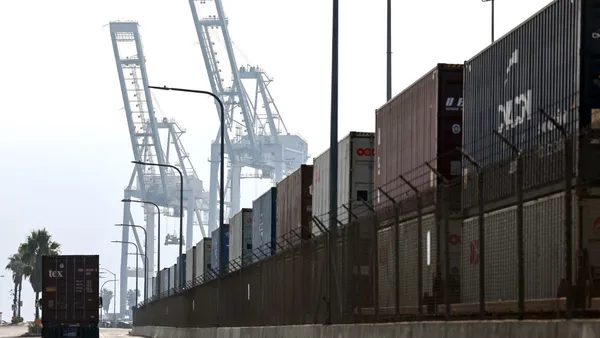Dive Brief:
- The share of overall freight handled by intermodal rail is likely to grow in the coming years as other freight modes use all available capacity, but local regulations and infrastructure on the East Coast could constrain that growth, according to experts at the APICS conference in Chicago last week.
- U.S. rail systems have plenty of capacity to handle the increase in volume, but that capacity may be capped if municipalities are unwilling to address laws and outdated infrastructure that hamper it.
- "On the East Coast we are a little constrained with our [double-stacked trains] so that’s a big focus that we’re working on now with upgrading our infrastructure to accommodate those clearance issues," said Jocelyn Gabrynowicz Hill, director of public affairs and assistant general counsel for Conrail.
Dive Insight:
In the current economic climate, all forms of freight are close to maxed out, but Hill said that intermodal rail is likely not to slow down even if the economy does.
A year ago, the Association of American Railroads (AAR) declared August 2017 the best month in intermodal history, but August 2018 shattered that mark with a new record, as railroads shipped 5.1% more containers and trailers than the previous high.
"The railways can increase what they carry in intermodal, but they’ve got to think about how they do it. At the moment I wouldn't say it's at capacity but it's getting close to capacity. You look at some of the intermodal trains that come from the West Coast to Chicago and they are 95% full," said Nick Little, director of railway education at the center for railway research and education at Michigan State University.
Hill said that Conrail is working with state governments, including the New Jersey transportation authorities, to see that infrastructure investments allow for increased rail traffic including heavier loads, double-stacked rail cars and faster traffic. Some of this increased capacity will be up to the railroads themselves however, since intermodal trains, if not mixed with other heavier cargo, can move faster than other trains.
Right now, said Little, getting intermodal trains from origin to destination takes some detailed choreography: "Creating paths for those trains is really a work of art."















